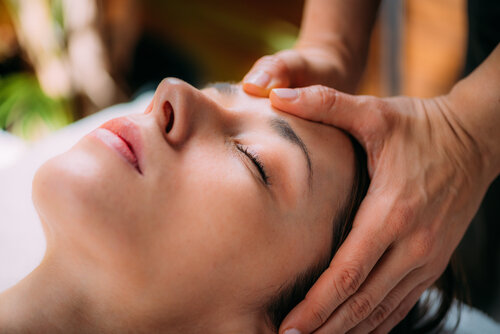
The Scientific Research on the Effectiveness of CranioSacral Therapy
Posted by Lane Watkins on 2023-03-09
The scientific research on the effectiveness of craniosacral therapy has made a huge contribution to the world of health and healing. It has shown that the practice of craniosacral therapy can help patients suffering from various disorders such as migraines, headaches, insomnia, and many others. However, this type of therapy is still not well known by the public. Thus, there is a need to study more about this treatment.
Clinical studies
Craniosacral therapy is an alternative approach to treatment for pain and other symptoms. Practitioners believe that tiny manipulations affect the flow of cerebrospinal fluid, which surrounds the brain.
During the therapy session, a craniosacral therapist uses a light touch to examine membranes of the body. This is based on a belief system that the body is connected at all levels. In addition to relieving pain, the technique may improve overall function.
Craniosacral therapy is frequently requested by patients seeking treatment for a variety of conditions, including headache, neck and back pain, and mental health issues. Studies have shown that it can reduce migraine severity and disability. However, there is little evidence to support its use for other conditions.
Several studies have shown that craniosacral therapy is effective for treating a variety of pain and other symptoms. For example, one trial showed that it was as effective as massaging muscle knots. Another found that it decreased the frequency of attacks in migraine patients.
Double-blind experiment
Craniosacral therapy (CST) is a type of manual therapy that is aimed to relax the tissue around the cranial structures. It has been shown to reduce the pain of musculoskeletal origin. In addition, it affects the mobility of the central nervous system.
CST is now being used in many countries. However, the mechanisms responsible for its effectiveness need to be investigated further. A review of studies assessing the effectiveness of CST found that its physiological foundation is still unclear.
The study aims to evaluate the effectiveness of a craniosacral therapy protocol. Patients were randomized into two groups: the CST group and the sham control group. They were treated four times a week for eight weeks and then evaluated at the end of the intervention.
Craniosacral therapy is an alternative medicine approach. It has been suggested that it may be effective in improving migraine symptoms. Moreover, it can also improve the patient's overall disability.
Contraindications
CranioSacral Therapy is a gentle, hands-on treatment that helps to release chronic stress. It is used for a variety of conditions and can promote physical efficiency and mental well-being.
CranioSacral Therapy is performed on adults and children of all ages. The technique consists of light touch and manual pressure that helps the body to regain its natural balance.
Although CranioSacral Therapy can have positive effects on the body, it can also cause a number of side effects. These can include temporary changes in mood, energy, and focus. Some therapists advise patients not to engage in physically exhausting activities while receiving this type of therapy.
CranioSacral therapy has been practiced for thousands of years. It is gentle, safe, and effective. A skilled practitioner will listen to cues from the body to determine the source of an obstruction.
One of the major contraindications to CranioSacral therapy is the change in intracranial pressure. Those who have a skull fracture or an active brain bleed should not receive this type of therapy.
Conclusions
Craniosacral Therapy is a method of gentle manual therapy. This therapy is designed to help patients gain relief from pain and improve their quality of life. It is often used in the treatment of chronic pain conditions.
This therapy involves light holding of the skull and slight adjustments to the cranium. It is based on a belief that tiny manipulations in the craniosacral region can change the way the brain and spinal cord function.
The technique is often recommended to people with headaches, back pain, and other ailments. Practitioners also claim that it can increase blood circulation. However, there is no scientific evidence that these techniques work.
In addition, the technique is contraindicated in patients with internal carotid artery commitment or spinal radiculopathy.
Despite the lack of solid scientific evidence, craniosacral therapy is considered a viable option for some types of chronic pain. Many people find that this form of manual therapy is both relaxing and effective.